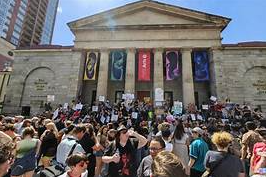With just seven days’ notice, the 150-year-old university’s sudden closure has left its community in shock.
The University of the Arts (UArts) in Philadelphia, a prestigious institution with nearly 150 years of history, made the shocking announcement on May 31 that it would be closing its doors, effective June 7. The announcement, which came just seven days before the closure, left students, faculty, and staff in disbelief. The university cited its “fragile financial state,” which had been exacerbated by years of declining enrollment, rising expenses, and falling revenues, as the main reasons for the sudden shutdown.
For over 1,000 students and hundreds of faculty members, the announcement raised a number of urgent questions. Owen Spaloss, a creative writing student who had just walked across the graduation stage in May, now finds himself in a difficult situation. Although he had completed the required coursework, a final three-credit summer internship was still needed to receive his degree. With the university’s closure, his ability to finish his degree and secure his future is now uncertain.
Many students, like Spaloss, rely on scholarships and financial aid to attend the university, and the rapid closure has thrown their academic and financial plans into disarray. With many of the university’s academic programs being unique to UArts, students are now facing the possibility of losing credits and scholarships if they transfer to other institutions. Spaloss expressed concern over the difficulty of finding a university that offers a creative writing program and would accept his credits.
In addition to the uncertainty facing students, faculty and staff are left with few answers about their future employment. The university’s abrupt closure has left many faculty members without a clear path forward, especially as the university had not provided ample time to prepare for such a significant change. The announcement had already started leaking before the official statement was made, further heightening the confusion among the university’s community.
The sudden closure of UArts has drawn criticism from many within the arts community, as the university has long been a cultural institution known for producing creative professionals in various fields, including theater, music, dance, and visual arts. The closure marks a stark reminder of the challenges facing arts institutions, which often struggle with financial sustainability in the face of rising costs and fluctuating enrollment numbers.
As the community grapples with the fallout, many are calling for transparency from the university’s leadership regarding the decision-making process that led to its closure. Some students have even petitioned for compensation for the disruption to their academic careers and financial investments. With limited time to find new opportunities, the students and faculty are left with few answers and even fewer options for the future.
This incident underscores the precarious state of arts education in America, particularly at institutions like UArts that have long provided an essential space for artistic and creative expression. The closure has sparked debate about the sustainability of arts colleges, as they continue to face financial pressures amid growing economic challenges.

